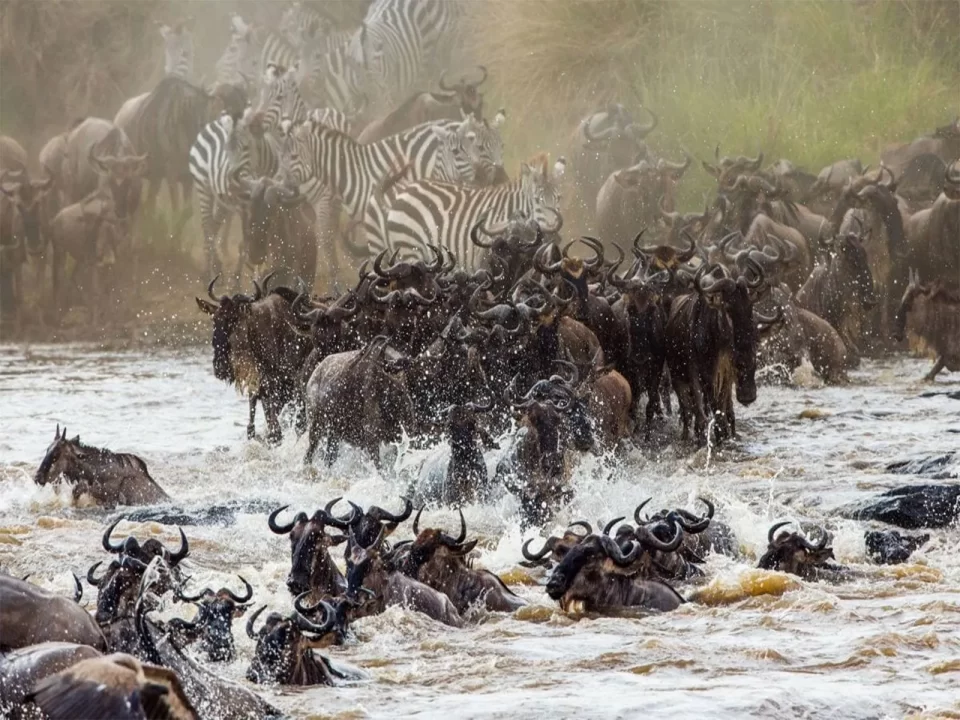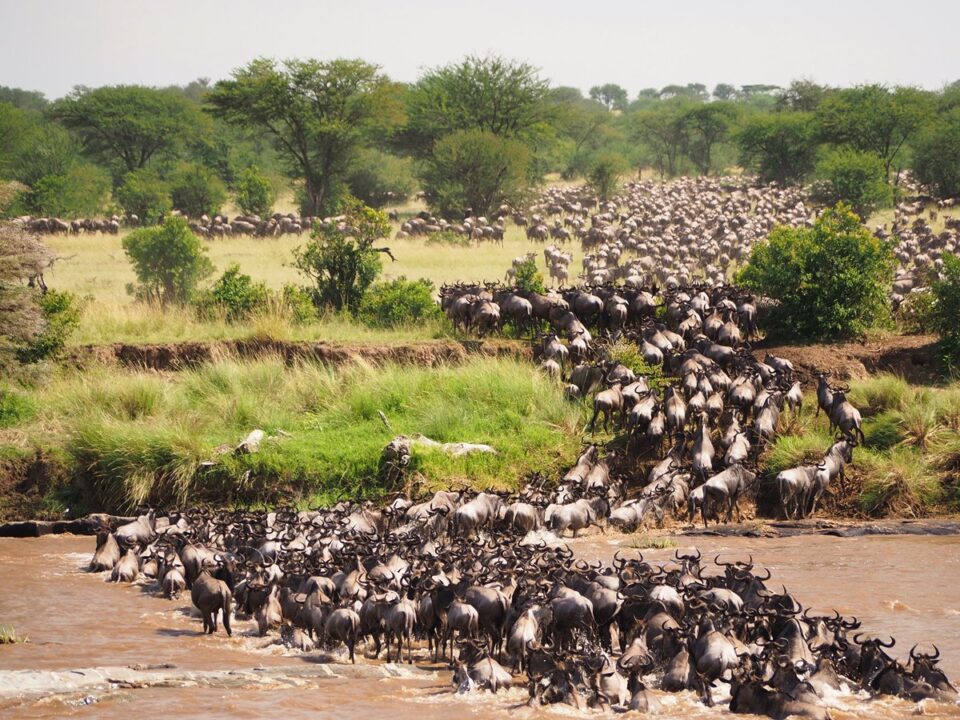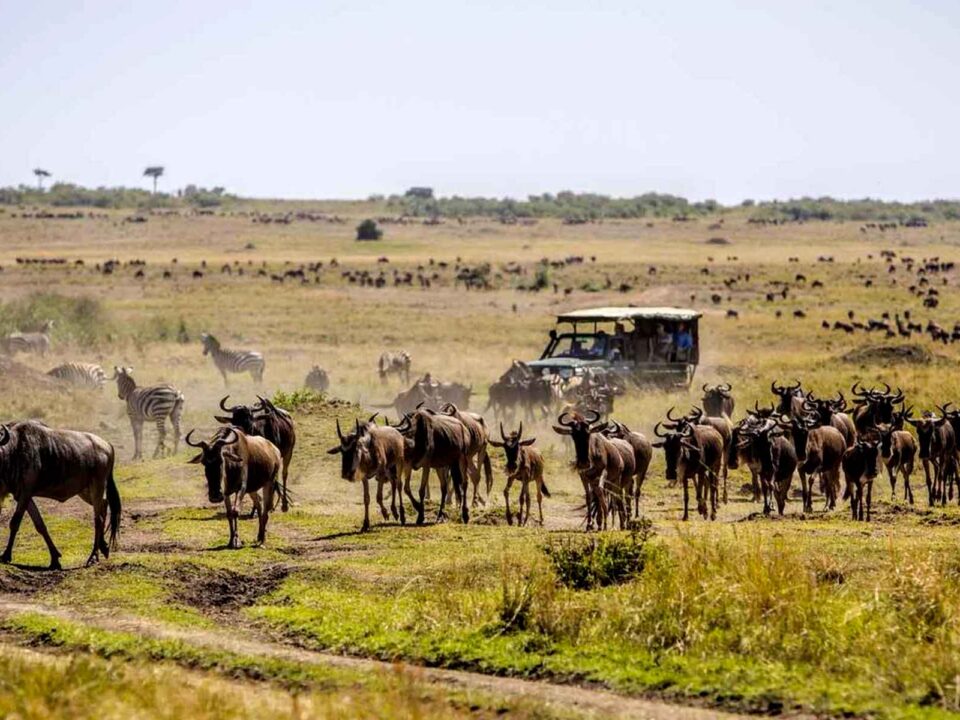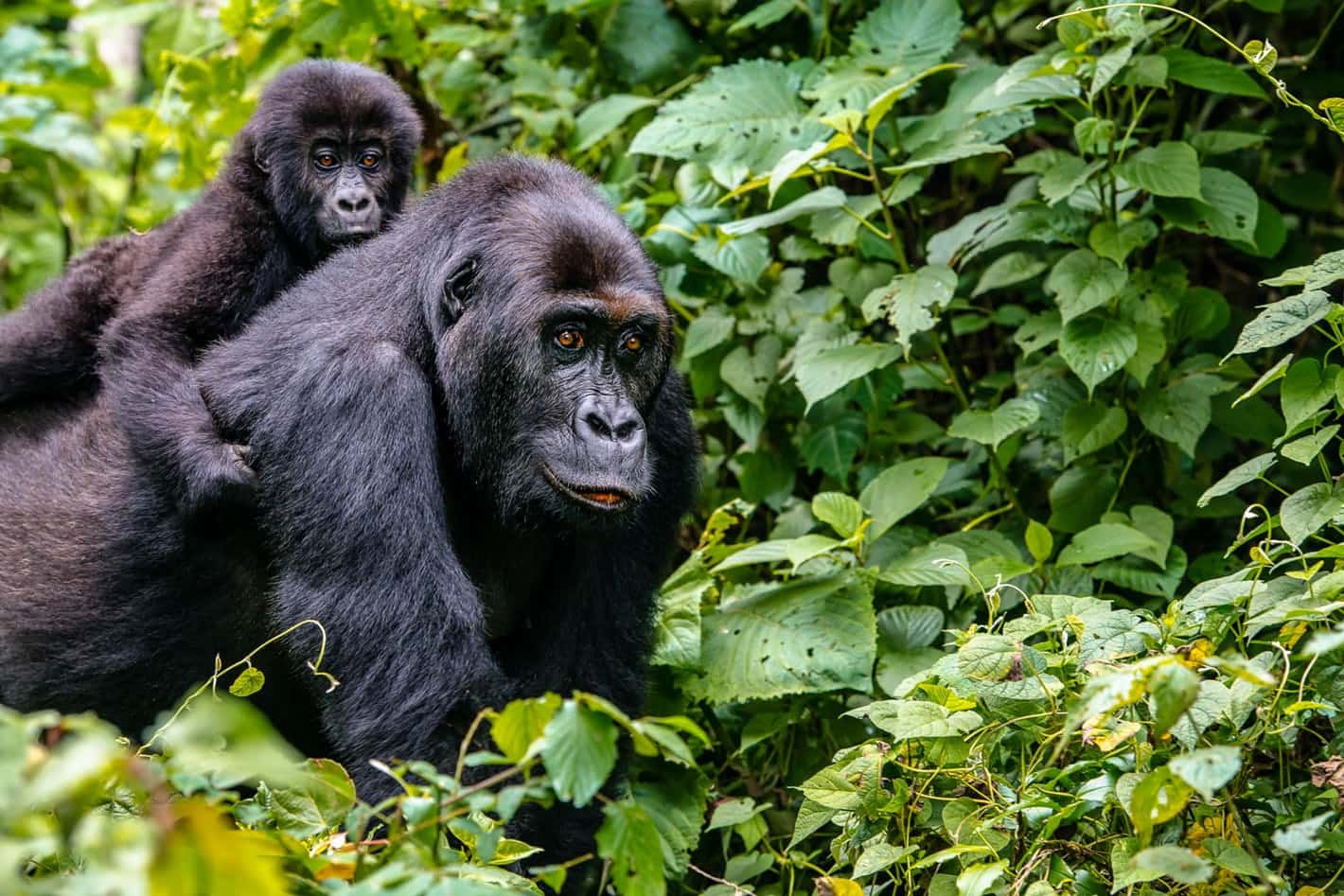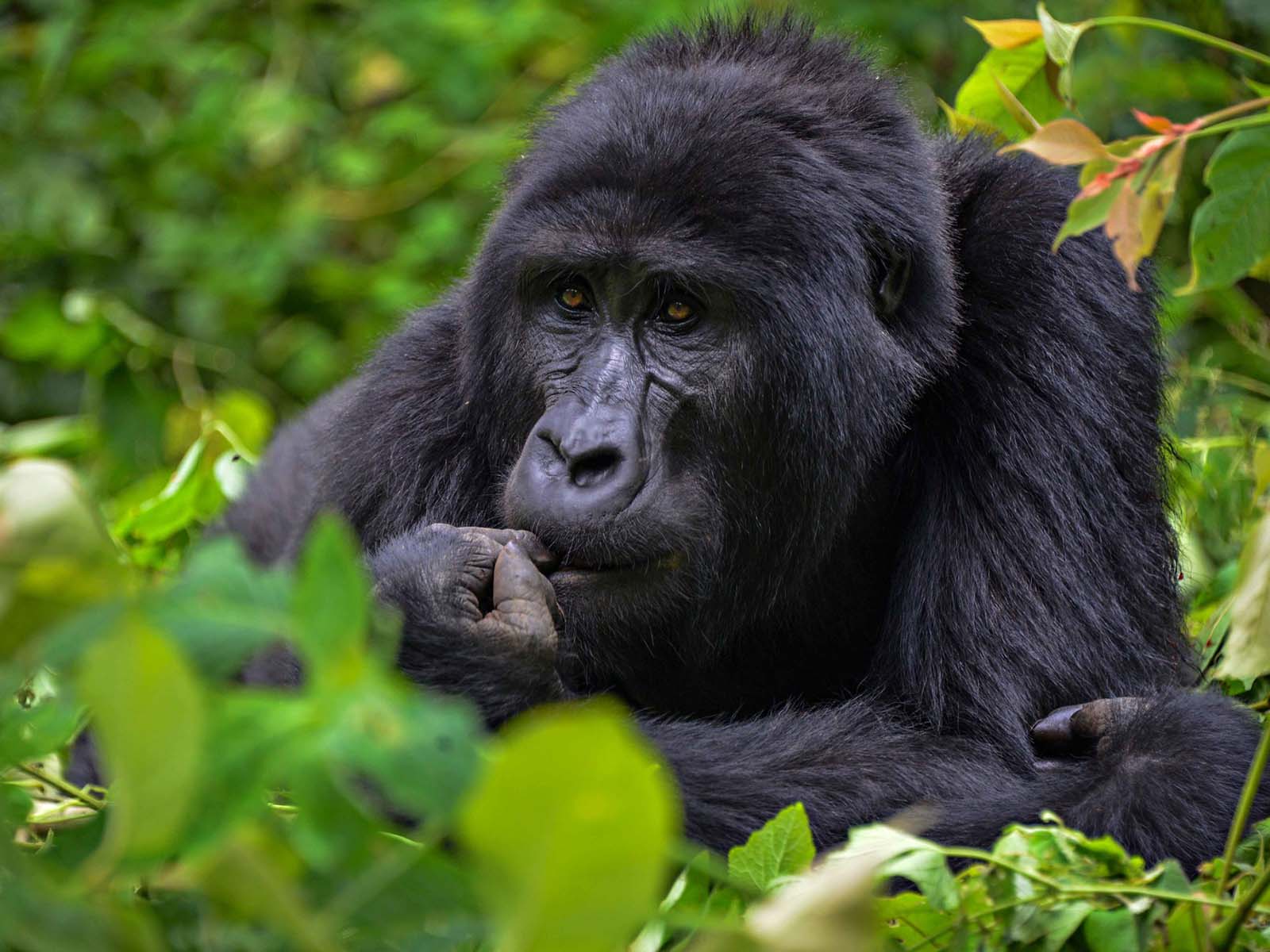All You Need to Know Before Booking a Wildebeest Migration Safari
Booking a wildebeest migration safari in Kenya and Tanzania promises an incredible opportunity to witness one of Africa’s most iconic natural spectacles. The term “wildebeest” originates from Africa and aptly translates to “wild beast,” reflecting the animal’s imposing appearance characterized by a large head, shaggy mane, pointed beard, and formidable, curved horns. However, these creatures are not the menacing predators of the African savannah; instead, they serve as a reliable food source for truly menacing predators like lions, cheetahs, wild dogs, and hyenas.
Wildebeests belong to the antelope family and are uniquely captivating animals found in the southern, northern, and eastern regions of Africa. They are known for their gregarious nature, rapid population growth, and the formation of exceptionally large herds. While wildebeests are fascinating to observe during a regular safari, witnessing their annual trek across the Serengeti during the Great Migration is a spectacle beyond compare. To provide you with a comprehensive understanding of these remarkable animals, we’ve compiled a list of intriguing facts about wildebeests.
Size and Appearance
Blue wildebeests, though members of the antelope family, exhibit a robust build and disproportionately large forequarters, resembling bovines more than antelopes. They can reach lengths of up to 8 feet, stand about 4.5 feet tall at the shoulders, and weigh up to 600 pounds. Both males and females sport horns.
Habitat and Range
Wildebeests inhabit grassy plains and open woodlands across Central, Southern, and Eastern Africa, with particular concentrations in regions like the Serengeti in Tanzania and Kenya. These creatures are active day and night, continuously grazing while traveling in extensive herds.
Migration
Their spectacular northward migration in search of greener pastures is primarily influenced by weather patterns and typically takes place in May or June. This migration ranks among the most awe-inspiring wildlife spectacles globally, involving up to 1.5 million wildebeests and hundreds of thousands of other animals, including zebras and gazelles.
Population
During February and March, the beginning of the rainy season, up to 500,000 wildebeest calves are born annually. These calves quickly learn to walk within minutes of birth and can keep up with the herd within days. Wildebeests can live for up to 20 years.
Additional Wildebeest Facts
- Wildebeests, large African antelopes, belong to the Bovidae family. The term “wildebeest” is derived from the Afrikaans language, meaning “wild beast.” Another name for wildebeest is “gnu,” pronounced “new.”
- Wildebeests are peculiar-looking animals, resembling lean, muscular cows, featuring large backs, curved horns, striped bodies, fluffy manes, and bushy beards.
- South Africa is home to two wildebeest species: the black wildebeest (Connochaetes gnu) and the blue wildebeest (Connochaetes taurinus). These species differ in horns, size, color, and habitat.
- Blue wildebeests inhabit woodlands, open grasslands, and desert areas and can be found in various South African reserves, including Kruger National Park and Zululand Reserve. They are dark grey with black tails and dark beards, known for their curious nature.
- Black wildebeests prefer open grasslands, primarily in the Highveld region of South Africa. They are smaller than their blue counterparts and feature a brownish-black appearance with distinct white tails.
- Both blue and black wildebeests are social animals, often coexisting peacefully with other plains game like zebras due to their distinct grazing habits.
- Wildebeests are herbivores, consuming vegetation primarily in the form of grass, but they will also eat leaves when necessary. They serve as prey for spotted hyenas, lions, cheetahs, and African wild dogs.
- These animals are constantly in search of food, maintaining an active presence day and night. They communicate through sight, smell, and vocalizations, with blue wildebeest males capable of bellowing loud enough for sounds to travel up to 2 kilometers.
- The Great Migration, spanning January to March, sees approximately 400,000 wildebeest calves born in the southern Serengeti each year. Astonishingly, these calves can run within minutes of birth, reaching speeds of up to 40 mph.
- Wildebeests form subgroups known as mega-herds to ensure ample food for the entire population. These sub-herds may follow slightly different paths while moving in the same general direction.
- When feeling threatened, wildebeests gather in large, intimidating groups and employ defensive measures such as bunching together, stamping, and even chasing away predators.
- Wildebeest herds demonstrate “swarm intelligence,” a collective behavior that allows them to systematically overcome obstacles during migration as a unified entity.

